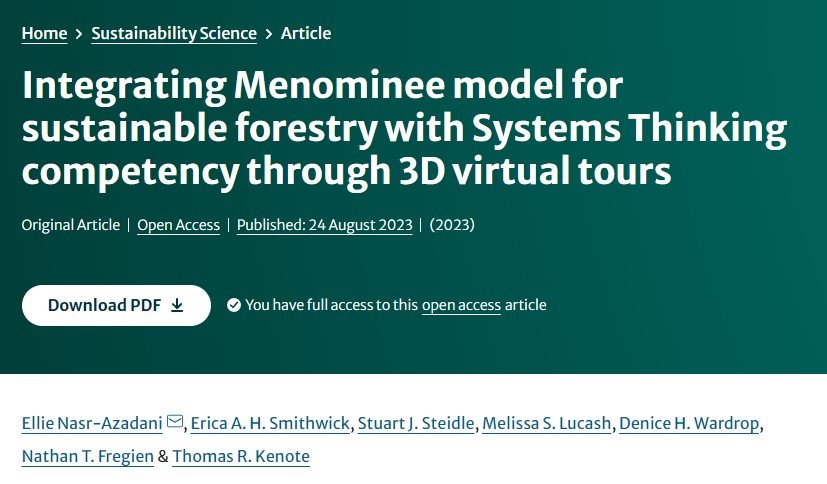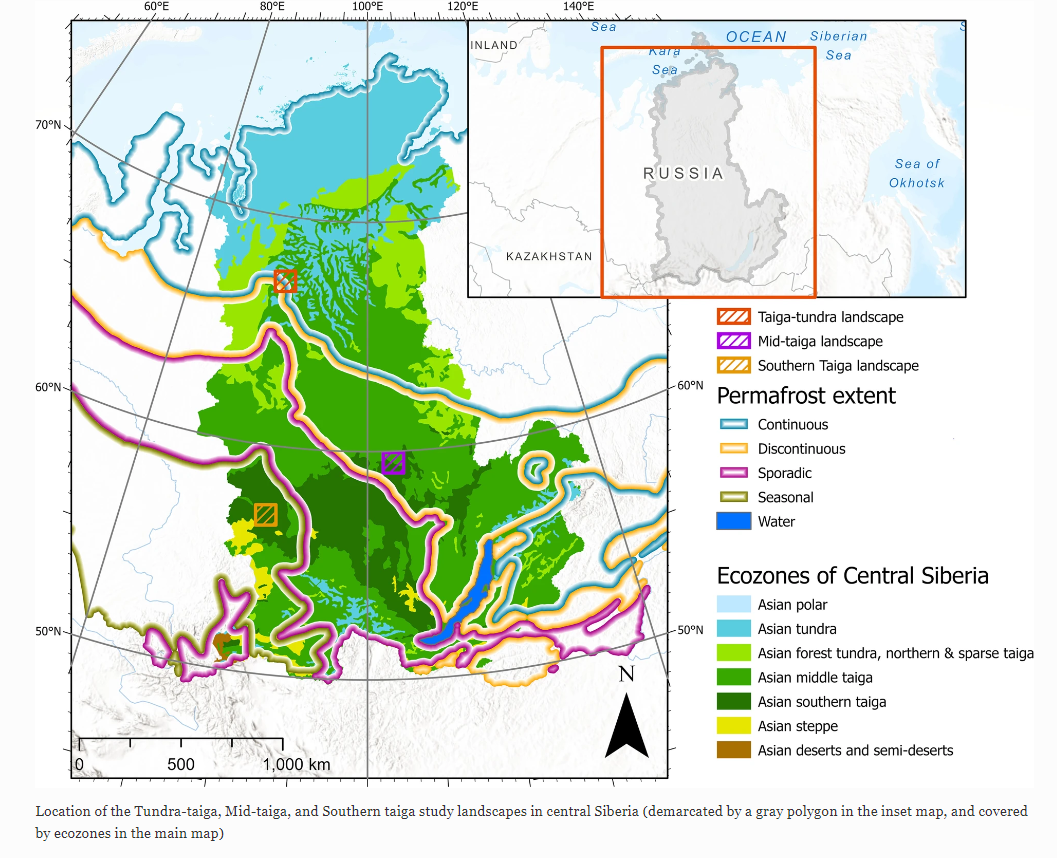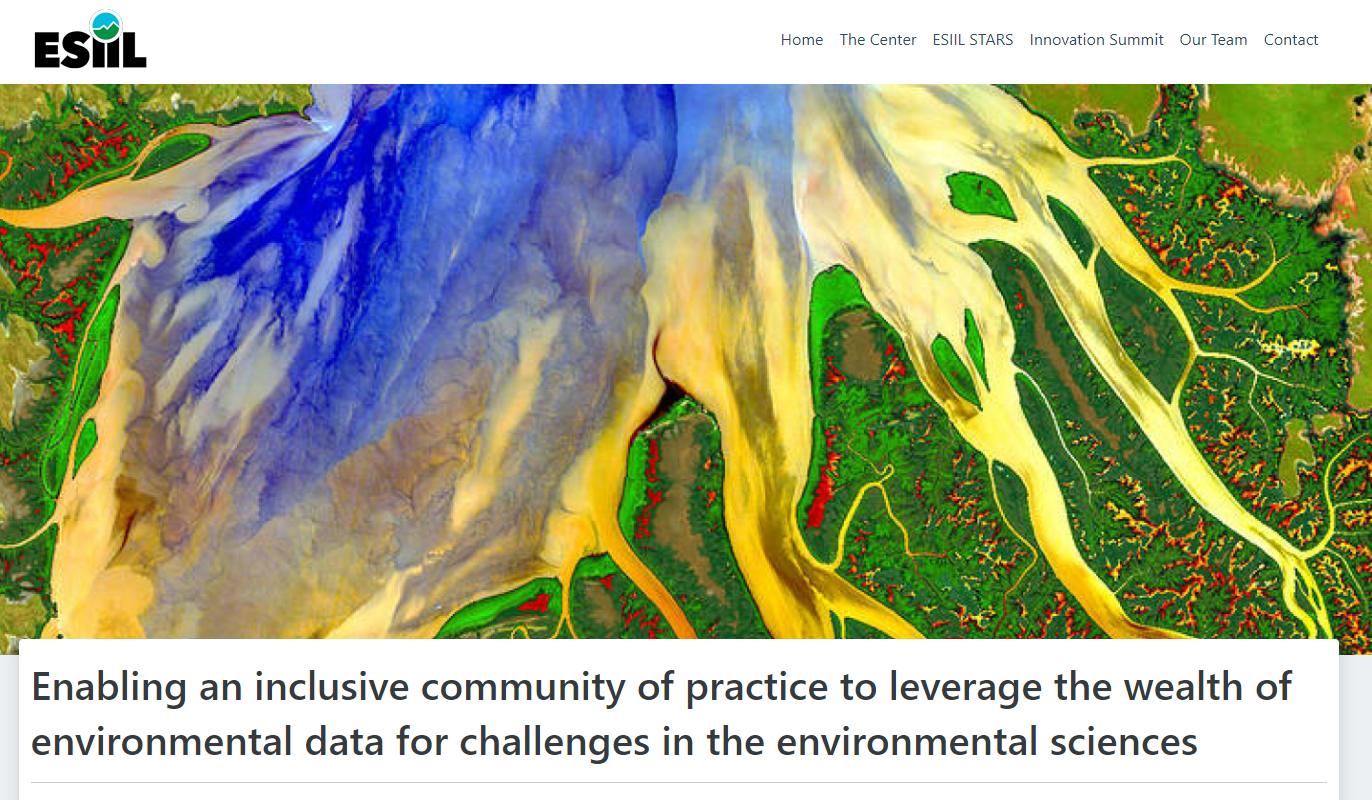New paper from our lab, led by PhD student Ellie from Penn State Geography, co-authored by Melissa Lucash and former M.S. student Stuart Steidle and several others from Penn State and College of Menominee Nation
Gabriel's NASA Fellowship this summer
For the past couple of months, Gabriel has been working with NASA's Climate Change Research Initiative (CCRI), helping direct a project called "Monitoring Lakes from Space in a Changing Climate." In a team along with a math teacher, undergraduate, and high school student, Gabriel developed a regional algorithm for harmful algal bloom (HAB) detection in New York State. Increasingly so in these freshwater systems, HABs pose a significant ecological risk, necessitating effective monitoring and management strategies. Using both in-situ lake water quality data from 35 large lakes in the state and Sentinel 2 imagery, they explored the relationships between satellite reflectance and chlorophyll-a using both linear and machine learning models. This project challenged and pushed them to develop many new skills, both technical and professional. This project was a fascinating exploration of remote-sensing capabilities and how they relate to environmental monitoring, Gabriel looks forward to seeing how this project develops with the NASA CCRI and its partnership with the incredible academics at the New York City College of Technology.
Shelby's first dissertation chapter is out today in Landscape Ecology!
Reburns (3 fires) were associated with greater shifts in conifer-dominant areas to broadleaf-deciduous than single burns (1 fire), which climate change accelerated.
In interior Alaska, increasing wildfire activity associated with climate change is projected to continue, potentially altering regional forest composition. Conifers are emblematic of boreal forest; however, greater frequency and severity of wildfires has been found to favor broadleaf-deciduous species in numerous studies. This study examines potential shifts in forest type in interior Alaska and how shifts may be impacted by recurring wildfires under future climate change. A spatially-explicit forest landscape model, LANDIS-II, was used to simulate forest succession and wildfire over a 380,400-hectare landscape under historic and future (RCP 8.5) climate. Wildfire was modeled using the SCRPPLE fire extension and vegetation growth, belowground carbon, hydrologic, and permafrost dynamics were modeled with the DGS succession extension. The relative importance of drivers of forest type change away from black spruce was quantified using random forest models for areas on the landscape experiencing different numbers of wildfires. Greater frequencies of fire activity were associated with shifts in conifer-dominant areas to broadleaf-deciduous, which climate change accelerated. Vegetation transitions were most strongly influenced by percent tree mortality from the most recent wildfire. Starting deciduous fraction and proximity of mature black spruce to a site pre-fire were also influential, indicating pre-fire composition and context.
New TEEL Paper just came out!
Congrats to former postdoc in our lab, Dr. Neil Williams, for leading a publication on wildfire and climate change in Siberia.
Williams, NG, MS Lucash, MR Ouellette, T Brussel, EJ Gustafson, SA Weiss, BR Sturtevant, DG Schepaschenko and AZ Shvidenko. 2023. Simulating dynamic fire regime and vegetation change in a warming Siberia. Fire Ecology 19 (1), 1-29. https://fireecology.springeropen.com/articles/10.1186/s42408-023-00188-1
TEEL Mountaineering
This weekend TEEL lab members, Colin Mast and Gabriel Abreu-Vigil hiked up to Hayden Glacier, located in between Middle and North Sister, to help fellow UO Geography masters student, Maxim Shapovalov, establish an automated weather station and ablation stake on the glacier. Hayden Glacier is a crucial water source for nearby cities such as Sisters and Bend. Maxim’s project hopes to assist local agriculturalists and city planners by assessing just how much water the glacier contributes over the course of a summer. While the hike was made brutal by the heavy packs and large equipment, the surrounding views of the High Cascades from atop the glacier made all the effort well worth it.
Hana won a $1600 scholarship to attend a writing workshop in Austria
Hana Matsumoto, M.S. student in our lab, won a $1600 scholarship to attend a writing workshop in Vienna, Austria next month. Congrats Hana! Thanks to the UO Grad School for supporting Hana!
Our entire lab went to the 2023 International Association for Landscape Ecology (IALE) conference in Riverside, CA
One talk
Lucash MS, N Williams and C Mast. 2023. Using landscape modeling to inform forest management planning of the Elliott State Research Forest, the largest research forest in North America. International Association of Landscape Ecology- North America, Riverside, CA.
and three posters!
Lamping J**, M Lucash, T Carter, B Buma and RM Scheller. 2023. The future of carbon in a perhumid landscape: Modeling carbon and species trajectories under contrasting management strategies. International Association of Landscape Ecology- North America, Riverside, CA.
Matsumoto H***, E Gustafson, T Brussel*, N Williams*, B Sturtevant, D Schepaschenko, A Shvidenko, and MS Lucash. 2023. Projecting the impacts of climate change and multiple disturbances on Siberian boreal and arctic ecosystems. International Association for Landscape Ecology- North America. Riverside, CA.
Mast C***, N Williams*, and MS Lucash 2023. Integrated effects of a Triad harvesting regime with wind and fire disturbances on key ecosystem services in the Elliott State Research Forest, Oregon. International Association of Landscape Ecology- North America, Riverside, CA.
Weiss S**, G Abreu-Vigil***, A Marshall, K Hayes, B Buma, D Nicolsky, and MS Lucash. 2023. Modeling fire and vegetation shifts in Alaskan boreal forests under future climate change. International Association of Landscape Ecology- North America, Riverside, CA.
Congratuations to Stuart Steidle, former M.S. student in our lab, for publishing his first paper!
New paper from our lab led by Stuart Steidle!
The paper compares public attitudes about habitat restoration of pine barrens in Wisconsin between a website and 3D virtual tour. We found that websites and 3D media equally enhanced public attitudes about habitat restoration. This is good news! A website that presents a compelling story of restoration is just as effective as a fancy 3D virtual tour for enhancing attitudes towards the clear-cutting and prescribed burning of forests that is necessary for pine barrens restoration. More details in the paper, which is free to download until the end of May. https://lnkd.in/gpa55FzY
Supercomputing resources at NSF features Shelby!
New blog on Cyverse, NSF supercomputing resources, features Shelby!
https://cyverse.org/cyverses-compute-power-accelerates-doctoral-researchers-science
Congratulations Gabriel!!!
Congrats to Gabriel who got accepted to the Innovation Summit led by ESIIL, a NSF-funded data synthesis center in Boulder, CO. https://esiil.org

















